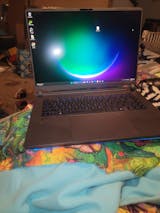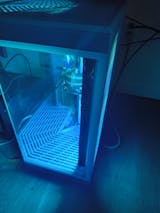General-purpose computing and hardcore gaming both rely on graphics processing units. GPU technology continues to evolve drastically from one year to the next, so it can be difficult to decide what benchmarks and metrics matter the most before deciding to buy. XOTIC PC is here to help those of you that are experts and novices. We aim to examine the key metrics of video cards in an effort to help you determine what features and factors you should consider before making the investment and proceeding with your build or upgrade.
Key Metrics of Video Cards
High-quality graphics cards aren’t difficult to spot, because they usually contain a lot of memory and fast processing ability. Furthermore, top-of-the-line graphics cards are usually more visually appealing with fans and heat sinks that tend to look nice inside the computer case. People that primarily use their computers for email, the internet, or word processing can find all that they need in a motherboard with integrated graphics. Mid-range cards might be sufficient for casual gamers, but high-end cards present the standard for hardcore gaming enthusiasts and graphic designers.
Frame Rate: One of the best measurements of performance in any graphics card is the frame rate, which is usually measured in frames per second (FPS). A frame rate is essentially the measurement of how many images a GPU can render and how many images are being displayed on a monitor every second. If a video game runs at only one frame per second, the experience might seem more like viewing a slideshow presentation. One component of a GPU frame rate is the triangles or vertices that make up the 3D images you see on your screen. 3D images are built by polygons, and it’s important to measure how quickly a GPU can calculate the whole polygon that defines those images or build a wire-frame model. Another component of a GPU frame rate is the pixel fill rate. Although relatively new, pixel rates are quite possibly the most important metrics of GPU performance. Pixel fill rates describe how many pixels a GPU can process in a second. In layman’s terms, the fill rate defines how quickly a GPU can rasterize images and write them to memory. You’ll find that most fast-action games require a frame rate of at least 60 FPS.
Hardware: Graphics processing hardware directly affects the speed of a unit. Some of the core GPU specifications to test include the GPU clock speed, memory, and RAMDAC speed. GPU memory can be measured in several ways – size (bits), amount of available memory (MB), clock rate (MHz), and bandwidth (GB/s). RAMDAC speed impacts the image quality, how often the screen can be refreshed per second, and the maximum resolution you can display.
In addition to frame rate and hardware, your PC’s CPU and motherboard can directly impact GPU performance. Even a high-end GPU relies on a motherboard’s ability to deliver data quickly. Moreover, GPU performance depends on a card’s connection to the motherboard and the speed at which it can receive instructions from the CPU. Graphics card metrics may seem simple to some and confusing to others, but it’s important to not let the complexity of terms or the abuse of benchmarks get in the way of testing or upgrading your GPU to meet your needs.













